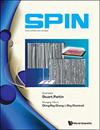广义度量空间中完全连杆的上界和下界
IF 0.7
4区 物理与天体物理
Q4 PHYSICS, APPLIED
引用次数: 1
摘要
在层次聚类问题中,任务是计算有限度量空间(P, dist)的一系列相互兼容的聚类。从每个点形成自己的簇的聚类开始,迭代地合并两个簇,直到只剩下一个簇。完全链接是计算这类聚类的一种著名且流行的算法:在每一步中,它合并所有当前可能合并的聚类中,其并集的半径(或直径)最小的两个聚类。我们证明了由完全连杆计算的每个k-聚类的半径(或直径)最多比最小化半径(或直径)的最优k-聚类差O(k)(或O(k2))。此外,我们对Dasgupta和Long[6]提出的问题给出了否定的答案,他们给出了Ω(log(k))的下界,并询问近似保证是否实际上是Θ(log(k))。我们提出了完全链接表现不佳的实例,因为由完全链接计算的k-聚类与半径和直径的最优解相差Ω(k)。我们得出结论,在一般度量空间中,完全连杆并不比单连杆具有更好的渐近性能,以最小的簇间距离合并两个簇,为此我们证明了O(k)的近似保证。2012 ACM学科分类计算理论→设施定位与聚类本文章由计算机程序翻译,如有差异,请以英文原文为准。
Upper and Lower Bounds for Complete Linkage in General Metric Spaces
In a hierarchical clustering problem the task is to compute a series of mutually compatible clusterings of a finite metric space $$(P,{{\,\textrm{dist}\,}})$$ ( P , dist ) . Starting with the clustering where every point forms its own cluster, one iteratively merges two clusters until only one cluster remains. Complete linkage is a well-known and popular algorithm to compute such clusterings: in every step it merges the two clusters whose union has the smallest radius (or diameter) among all currently possible merges. We prove that the radius (or diameter) of every k -clustering computed by complete linkage is at most by factor O ( k ) (or $$O(k^{\ln (3)/\ln (2)})=O(k^{1{.}59})$$ O ( k ln ( 3 ) / ln ( 2 ) ) = O ( k 1.59 ) ) worse than an optimal k -clustering minimizing the radius (or diameter). Furthermore we give a negative answer to the question proposed by Dasgupta and Long (J Comput Syst Sci 70(4):555–569, 2005. https://doi.org/10.1016/j.jcss.2004.10.006 ), who show a lower bound of $$\Omega (\log (k))$$ Ω ( log ( k ) ) and ask if the approximation guarantee is in fact $$\Theta (\log (k))$$ Θ ( log ( k ) ) . We present instances where complete linkage performs poorly in the sense that the k -clustering computed by complete linkage is off by a factor of $$\Omega (k)$$ Ω ( k ) from an optimal solution for radius and diameter. We conclude that in general metric spaces complete linkage does not perform asymptotically better than single linkage, merging the two clusters with smallest inter-cluster distance, for which we prove an approximation guarantee of O ( k ).
求助全文
通过发布文献求助,成功后即可免费获取论文全文。
去求助
来源期刊

Spin
Materials Science-Electronic, Optical and Magnetic Materials
CiteScore
2.10
自引率
11.10%
发文量
34
期刊介绍:
Spin electronics encompasses a multidisciplinary research effort involving magnetism, semiconductor electronics, materials science, chemistry and biology. SPIN aims to provide a forum for the presentation of research and review articles of interest to all researchers in the field.
The scope of the journal includes (but is not necessarily limited to) the following topics:
*Materials:
-Metals
-Heusler compounds
-Complex oxides: antiferromagnetic, ferromagnetic
-Dilute magnetic semiconductors
-Dilute magnetic oxides
-High performance and emerging magnetic materials
*Semiconductor electronics
*Nanodevices:
-Fabrication
-Characterization
*Spin injection
*Spin transport
*Spin transfer torque
*Spin torque oscillators
*Electrical control of magnetic properties
*Organic spintronics
*Optical phenomena and optoelectronic spin manipulation
*Applications and devices:
-Novel memories and logic devices
-Lab-on-a-chip
-Others
*Fundamental and interdisciplinary studies:
-Spin in low dimensional system
-Spin in medical sciences
-Spin in other fields
-Computational materials discovery
 求助内容:
求助内容: 应助结果提醒方式:
应助结果提醒方式:


